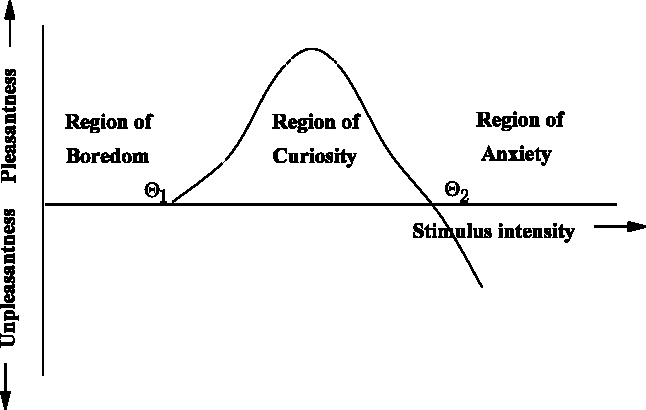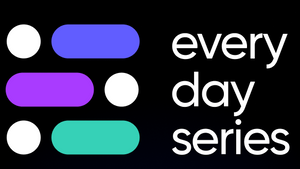One of the main discussions in the last few weeks has been the changes that ChatGPT and Generative AI will bring into education. It is a complex subject and needs a wider and more detailed discussion. This week I will pen down my thoughts on the topic as a series of blogs on it.
The current post is part one of multi-part series on The curious case of online learning that we will cover this week.
The curious case of online learning - II: Curiosity
In our previous post, we covered how the pandemic has led us to a missed opportunity that could have created a moon landing moment for education. Also, “education in an emergency” hasn’t helped an unprepared world. It has created a divide between haves and have-nots concerning education. The dream of no child left behind, equitable education, the right to education, and many similar initiatives took two steps back during the pandemic. The promise of online learning was never delivered. It neither solved the problem nor is effective as a chalk-and-talk approach.
Today I will discuss how curiosity plays an important role in education and how curiosity-induced education can still overcome the current limitations. This week I have completed 100 days of relentless daily blogging on www.everydayseries.com, a daily micro-blog on learning one topic a day. I will share some of the learnings from running the blog here as well.
Curiosity
The case of curiosity
How do we define it?
There is no one-size-fits-all answer to this question, as the definition of curiosity will vary depending on who you ask. Some people might define curiosity as a desire to learn more about something, while others might see it as a general inquisitiveness about the world around us.
D. Berylene's definition of curiosity is the desire to learn and explore new things. This desire is sparked by a novel, complex, or ambiguous stimulus, which can be anything from a novel experience to a question. Drive theorists (explained below) believe that curiosity is motivated by a desire to reduce the unpleasant feeling of uncertainty associated with the stimuli. Several studies have shown that animals, when presented with novel, complex, or ambiguous stimuli, engage in exploratory behaviour without additional incentives. However, it does not explain why people look for curiosity-evoking stimuli when it is not present anywhere.
The case of known-unknowns
In 2003, then-Secretary of Defense Donald Rumsfeld famously outlined the three types of knowledge: known knowns, things that we know that we know; known unknowns - things that we know that we don’t know and unknown unknowns, the things that we don’t know, that we don’t know. He explained that while we may know about some things that could happen, there are other things we don't even know to ask about. And still, other things may occur that we never imagined could happen.
In light of this, our entire education system and assessments seem to be based on known-knowns. Assessments help us explore how better we know them.
Curiosity lies in the domain of known unknowns. When we know that we don’t know something and there is a deep desire to know something is where we can place the element of curiosity.

Curiosity can further be divided into Curiosity as the feeling of interest and Curiosity as a feeling of deprivation.
Curiosity as the feeling of interest (CFI)
Curiosity is mostly seen as a feeling of interest. We are curious about things that intrigue us and ones we want to learn more about. In this case, it is more of an example of exploratory science, where one is intrigued by a particular topic and wants to learn more about it by digging deeper. However, if we don’t get an answer to our query, we either park it aside or move on. But if we do get answers, it gives a sense of satisfaction. When we learn this way, we retain the knowledge for a longer period of time than when we learn without having the element of unravelling the known unknown.
Curiosity as the feeling of deprivation (CFD)
But there is another kind of curiosity, one born out of deprivation. This type of curiosity is driven by a need to understand something that has been withheld from us. Whenever we are deprived of something, we become curious about it.
This second form of curiosity can be just as powerful as the first. It can become even stronger as a result of our desire for knowledge and understanding. When we are curious in this way, nothing can stop us from finding out what we want to know. We'll explore every possibility until we figure out what's going on behind closed doors or hidden in the dark corners. A seed that grows inside the mind can be attributed to this type of curiosity.
Various theories are trying to understand curiosity but a comprehensive theory is still missing. The most available approaches to understanding human curiosity include:
Curiosity Drive Theory:
This theory is related to CFD as there is a level of discomfort associated with uncertainty. The reduction of these feelings can be seen as a reward. People desire coherence in their thought processes and a deeper understanding of them. As soon as this coherence gets disrupted by something unfamiliar, uncertain, or ambiguous, the curiosity drive is activated to gather information and knowledge concerning the unfamiliar to restore coherence to the thought process. This theory maintains that curiosity is developed primarily as a result of the desire to comprehend unfamiliar aspects of one's environment through the interaction of exploratory behaviours. This behaviour and desire will cease once an understanding of the unfamiliar is achieved and coherence is restored.
Optimal Arousal Theory:
According to the concept of optimal arousal of curiosity, there is a tendency to maintain an optimal level of arousal. Whenever we encounter stimuli associated with complexity, uncertainty, conflict, or novelty, arousal increases, and we employ exploratory behaviour to learn about that stimulus and therefore reduce arousal. The opposite occurs when the environment is boring or lacks excitement, which reduces arousal and results in exploratory behaviour to increase information input and stimulation, thereby increasing arousal.
Cognitive-consistency theory
The cognitive consistency theory of curiosity is the main idea that humans are driven to seek information consistent with their beliefs and attitudes. According to this theory, people are curious about the new information inconsistent with their current views and beliefs, because they want to resolve the inconsistency and achieve cognitive consistency.
For example, research has shown that people are more likely to be curious about news stories that contradict their political views than stories that support them.
Apart from these theories, there is a role of reward, pleasure, and thrill-seeking behavior in curiosity as well, however we lack a general theory explaining all of these. There is a relationship between human curiosity and complexity of stimulus and is known to follow an inverted U-curve.

Similar to Wundt Curve, this curve is an important tool in understanding the relationship between human behaviour and curiosity. It helps to identify the different stages which humans go through as they learn new information. The curve may also be used to determine the amount of learning and the degree of retention that a person has achieved.
Online Classes
The case of dropout in online classes
There has been a significant increase in the popularity of massive open online courses (MOOCs) in recent years, which have attracted learners from across the world. The impact of COVID has led to a massive surge in online enrolment. With the new work-from-home work culture MOOC in a different form is currently implemented by organizations, governments, and universities. Despite this, MOOCs face a significant challenge in the form of a high dropout rate, which ranges between 91% and 93%.
MOOCs have tried to reinvent themselves to achieve that, for instance, moving to a micro-byte of learning. Many platforms emerged recently and it is observed that the dropout rate is less for the micro-byte style of learning. One reason attributed to it is that GenZ does not have the attention span and prefers micro-content like those served by TikTok, Instagram, etc. This notion is also reflected in the preference for 10-minute web series over 90-120 minute movies and blogs over books.
I run www.everydayseries.com teaching one concept a day in micro-byte text. Learn one topic a day, every day. Currently focussed on learning about AI for non-tech and tech alike, it will see more topics in the coming weeks.
I have experimented with long text to smaller text, audio to reels-type learning modules and free to paid content, but the results have been majorly inconclusive so far on if the length of the content has any impact. Since more use cases are needed to conclude it, the verdict on the length of content to dropout is yet to arrive.
Learning Stages
The following are the major stages of learning.
- The acquisition is when a person first learns about something new. They may not understand it completely, but they are starting to learn what it is and how it works.
- The organization occurs when a person starts to put the pieces of the puzzle together and begins to make sense of what they are learning.
- Integration happens when all of the knowledge acquired so far starts coming together into one cohesive whole unit.
- Differentiation occurs when a person can take what they have learned and use it in different situations with different results
In most online MOOC programs, the program is aimed at the acquisition stage. Most of the timely completion of the course is tied to a reward of certificates.
The case of quizzes and assessment
There is no debate that quizzes and assessments play a significant role in the educational process. They provide teachers with a way to track student progress, identify areas of weakness, and determine what concepts need further explanation. However, quizzes and assessments on topics that are new information for the reader can also be used to increase engagement. Using assessment lies under known-known (as we mentioned earlier), and most MOOC has been using quizzes less as stimuli but more as an internal metric to understand the effectiveness of their course. If someone is already in the zone of boredom, it may not be motivating enough for the learner to take the quiz or complete the assessment.
When used as a stimulus in the region of boredom, a quiz can draw the user into the basin of curiosity. MOOCs have not taken advantage of this aspect of curiosity as an element of learning. There are numerous examples where quizzes are used to create engaging conversations; be it puzzles by grandmother during a relaxed summer or TV series like who wants to be a millionaire. In such cases, piquing the curiosity at the right time triggers more engagement and leads to effective outcomes.
One of the most engaging posts on everydayseries.com has been about the quizzes. It was even titled “Can you answer these simple questions ?”
I believe that a modern MOOC does not need to emphasize smaller text but place the right kind of questions in the right spot. It’s easy to understand the onset of boredom or the arrival of anxiety by a reader today. The use of correct cues via quizzes can be highly effective in reducing churns in MOOCs. I will cover more on this in future posts.
The case of boredom and anxiety
There are many reasons for this high dropout rate, but the most common ones are boredom and lack of engagement. Boredom and anxiety in online classes are real problems. Many students feel bored in MOOCs because there is less interaction with the professor or other students. It can lead to a feeling of isolation, which can cause anxiety.
Additionally, many students feel anxious about taking an online class because they are worried that they will not be able to keep up with the work or may miss something important. These concerns are valid, as online classes require more self-discipline than traditional in-class courses. However, with a little effort and planning, boredom and anxiety, can be avoided in online courses.
Just like quizzes, interventions like group discussions, breakout rooms in zoom classes, and providing a synopsis of the content and topic of discussion beforehand can be helpful. In addition, a well-moderated WhatsApp group can also assist in learning. It is effective if learners network with peers to gain an improved understanding of how learning from the course is applied by other learners, in the real world. It also leads to the conversational type of learning; which has higher retention than any other type of learning. I will cover this aspect in future posts too.
Other methodologies like storytelling and presentation style also play a major role in creating better engagement. In future posts, I will cover these topics and how community plays a role in online learning, an aspect missing from MOOCs.
Ultimately, taking or delivering an online course requires more self-motivation than in a traditional classroom setting. So whether you are an instructor or learner:- proper intervention and building your discipline and content around curiosity can help reduce dropout rates and make online learning more engaging and beneficial.
We research, curate and publish daily updates from the field of AI.
Consider becoming a paying subscriber to get the latest!









